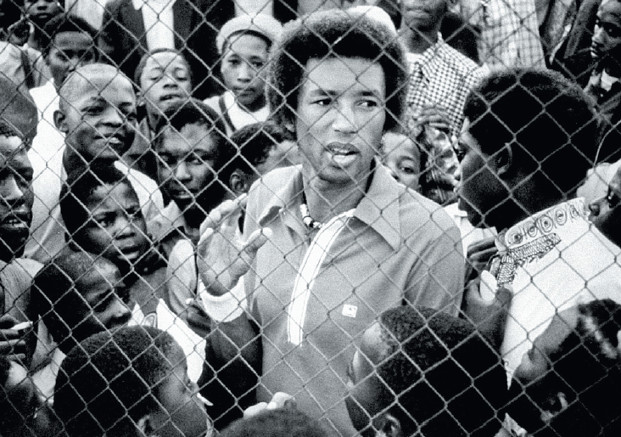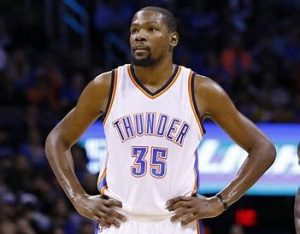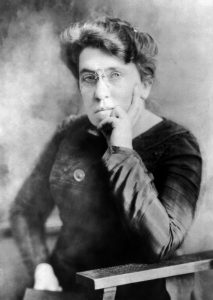In the summer of 1943, one of the greatest tennis players in the world was born. His name was Arthur Ashe, and he didn’t know it at the time, but he would grow up to make history. In 1968, at the age of twenty-five, Ashe became the first African-American man to win the US Open. He began dominating the sport of tennis and furthered his success by winning three Grand Slam titles. However, his greatest and most difficult match didn’t take place on the court at all, but rather in South Africa during the seventies.
Life for an African American was difficult enough in the United States, particularly because of the racial segregation of the time. At a young age, Arthur Ashe experienced the effects of racism in his hometown of Richmond, Virginia; he found the discrimination to be something that was part of his everyday life, and he didn’t give much thought to it. As he grew older, Ashe’s encounters with racial discrimination continued to grow. A particular incident during his freshman year at UCLA left Ashe to make a choice that would not only affect him but also his UCLA tennis teammates. UCLA tennis coach, J.D. Morgan, had a meeting with Ashe to explain the issue at hand. The UCLA tennis team had been invited to participate in a weekend tennis tournament at the Balboa Bay Club, located on the California Riviera; however, this club was deemed a “white only” club, and it prohibited African Americans from being part of this exclusive club. Morgan explained that when the invitation had arrived, Ashe was specifically left off the list in order to avoid ruffling feathers. At that point, Ashe was presented with an choice by his coach: “either the team would travel to Balboa without him or they would boycott the tournament and ‘make an issue’ of the exclusion.”1 Ashe’s final decision was to let the team go on to play in the tournament without him. He felt that by participating in a boycott, he would be placing his fellow teammates in an awkward position, which was something he did not want to do. In that moment, Arthur Ashe realized that fighting for what he believed in as well as playing the sport he loved the most would not be as simple as it seemed, and he would encounter the same issue a few years later.2

Ashe tried his best to find a balance between tennis and politics, and it was no easy task. Following his groundbreaking 1968 win at the US Open, Ashe began getting questions about racism in general, and about South African apartheid in particular. The term apartheid means “separateness” in the Afrikaan language. Apartheid refers to the notorious South African system of “rigid racial segregation, through which the ruling Afrikaner-based National Party (NP) attempted to create separate cultural, political, and social spaces for white, African, Indian, and colored (mixed race) South Africans.”3 At the time, Ashe was a quiet man, known for trying to stay out of conflict. He tried to be as clear as possible with his statements regarding apartheid so that there would be no speculation on his political views. However, his statements would come back to haunt him during an important and crucial time.4 Not long after his interview, Arthur Ashe became one of the leading voices against the harsh apartheid policy in South Africa. His firsthand encounter with the South African government took place when he applied for a travel visa so that he could participate in the 1970 South African Open. A fellow tennis player, Cliff Drysdale, who was from South Africa, warned Ashe about the low probability of being allowed into the country due to his race. At first, Ashe didn’t believe Drysdale, but after his application was rejected not once but twice, Arthur Ashe began to see the issue at hand.5

The strict apartheid policy in South Africa was put into effect in the late forties and early fifties. The major objective of the apartheid system was “to prepare, to program, and to destine young blacks…for a lifetime of servitude.”6 As mentioned previously, Ashe had spoken out against the apartheid policy in South Africa at the time. Learning about Ashe’s increasing activism and anti-apartheid statements, the South African government claimed that his actions provided cause for the prime minister to deny his request for a visa. In 1969, Arthur Ashe, along with other African-American athletes, were placed on a list of individuals who had been barred, or prevented from entering, South Africa. In the wake of being barred, Ashe took this opportunity to speak up and use his status as a professional athlete to argue for some form of punishment towards South Africa for its racial practice of apartheid. Ashe tried to convince his fellow teammates, who were all white, to protest alongside him, but many expressed little or no interest to assist Ashe in his fight for change. A majority of people thought that Ashe’s decision to fight to play tennis in South Africa was not a good idea from the start. In addition to this, racial activists in the United States were angered at how Ashe had his attention focused solely on the discrimination in South Africa and not on the discrimination his fellow black men and women were facing back home. Ashe had his own personal reasons for becoming an anti-apartheid activist. He viewed the actions of South Africa as an offense directly to himself and to his career. Ashe saw this situation as a way to speak up for those who couldn’t, and one way he did so was by participating in several protests, some occurring in Washington D.C. Ashe viewed his participation in these protests as his direct contribution to the citizens of South Africa, hoping that it would create a path for equality.7
About four years after Ashe’s head-to-head match began with the South African government, he was ultimately granted a visa in 1973. Before he agreed to play in the South African Open, Ashe made a special request. He specifically asked for the attending crowd to be seated in an unsegregated fashion; his request was granted. The day of November 26, 1973 was one of the most significant moments in Arthur Ashe’s life; feeling the pressure to perform his absolute best, Ashe managed to make it all the way to the finals, in which he played against fellow American tennis player, Jimmy Connors. Although Ashe did not win the match, many of South Africa’s citizens, specifically the young black boys, looked at him with great respect and awe.8 However, Ashe’s tennis playing in South Africa was not finished just yet; the following day after losing to Jimmy Connors, he and Dutch tennis player Tom Okker played together to win the doubles championship of the South African Open.9

While Arthur Ashe continued to be a voice for the anti-apartheid activists, he was still training and winning tennis championships. Prior to playing in the South African Open in 1973, Ashe participated in the Australian Open on January 26, 1970; he went head-to-head with Australian tennis player Robert “Dick” Crealy in a match that was struck by bad weather. The wrath of Mother Nature proved to be no problem to Ashe,as he went on to defeat Crealy in two straight sets, making this his second Grand Slam title win. In 1975, Ashe met defending champion Jimmy Connors on the tennis court for a second time, when both men battled for the Wimbledon Grand Slam title. At one point, it seemed that Connors would definitely take home the title but Ashe stopped that real quick. After breaking Connors’ serve two times, he had finally done it: Arthur Ashe won his third Grand Slam title as well as becoming the first African-American man to win the singles title at Wimbledon.10. Arthur Ashe had several major accomplishments in the tennis world that created a long-lasting legacy for him and that’s what he is most often regarded for. However, his perseverance in his four-year head-to-head match with the South African government is an aspect of Ashe’s life that is often overlooked, but not anymore.
- Eric A. Hurt, Arthur Ashe: Tennis and Justice in the Civil Rights Era (Baltimore: John Hopkins University Press, 2014), 8. ↵
- Eric A. Hurt, Arthur Ashe: Tennis and Justice in the Civil Rights Era (Baltimore: John Hopkins University Press, 2014), 47-48. ↵
- Edward Ramsamy, Andrea L. Santon, Peter J. Seybolt, “Apartheid,” Cultural Sociology of the Middle East, Asia, and Africa (Thousand Oaks: Sage Publications, 2012), https://search.credoreference.com/content/topic/apartheid?institutionId=4592. ↵
- Eric A. Hurt, Arthur Ashe: Tennis and Justice in the Civil Rights Era (Baltimore: John Hopkins University Press, 2014), 65. ↵
- Arthur Ashe and Arnold Rampersad, Days of Grace (New York: Knopf, 1993), 104. ↵
- Allen McDuffee, “When Arthur Ashe fought to play tennis in apartheid South Africa, he faced bitter criticism,” Timeline, September 29, 2017, accessed September 8, 2017, https://timeline.com/arthur-ashe-south-africa-99c415a6aee2. ↵
- Eric A. Hurt, Arthur Ashe: Tennis and Justice in the Civil Rights Era (Baltimore: John Hopkins University Press, 2014), 98. ↵
- Allen McDuffee, “When Arthur Ashe fought to play tennis in apartheid South Africa, he faced bitter criticism,” Timeline, September 29, 2017, accessed September 8, 2017, https://timeline.com/arthur-ashe-south-africa-99c415a6aee2. ↵
- Eric A. Hurt, Arthur Ashe: Tennis and Justice in the Civil Rights Era (Baltimore: John Hopkins University Press, 2014), 175. ↵
- Eric A. Hurt, Arthur Ashe: Tennis and Justice in the Civil Rights Era (Baltimore: John Hopkins University Press, 2014), 126, 214. ↵



42 comments
Sarah Nguyen
This was an interesting article, and I liked how the author explained the controversy of racial activists in the U.S., as Ashe’s main focus was on South Africa. The racial barriers he faced both in South Africa and in the U.S. as an upcoming star in the sports world as a person of color reminded me of Jackie Robinson, a baseball player who faced much racial discrimination during the 1940s. It kind of made me take a step back and analyze that although 30 years had passed between Robinson and Ashe’s career, there was still much racial discrimination, and not much had changed regarding segregation. It was awesome getting to know that Ashe was able to have an influence on desegregating the crowd when he played for the South African Open. Thanks for sharing!
Rylie Kieny
I found this article very interesting as I have never heard of Ashe. I find it incredible that he was able to be such an activist while being such an amazing tennis player. This also shows the influence athletes have in regards to change. Today we see Serena Williams fighting for the rights of women as Ashe did for African American people. It is sad that he had to endure all the racism during his career but the fact that he was able to triumph over it all speaks volumes. He will not only be remembered for what he did not the court but what he did off it as well. As the author stated little boys in the stands were inspired by the person and player he was.
Maisie Favila
Although I had heard of Arthur before, I didn’t really know who he truly was. I think it’s ridiculous that the prime minister denied his request for his visa. I really liked this article because it informed me on not only what Ashe accomplished but what issues were occurring at the time. I loved hearing the part where he had requested the crowd to sit in an unsegregated fashion. Overall, I enjoyed reading this and definitly learned a lot.
Nathan Alba
I think because athletes are put on such a pedestal they are expected no to have any political views, rather just stay out of controversial beliefs and play a sport. This is hard to understand, because athletes are people too, and they also have views and beliefs. Although it may have been uncommon at the time, nowadays a lot of athletes are using their platform to speak up on political issues and use their platform to bring to light many things everyday people don’t really pay attention to.
Damian Jennings
It saddens me to hear that Arthur Ashe was just a young man, trying to experience college at UCLA and participate in academics and sports, but he would also be forced to participate in politics. His self sacrifice amazes me, he did not let his team boycott the tournament, instead he pushed them to play without him. A bold and noble move by the young talented tennis player.
Eloisa Sanchez Urrea
Standing up for what we think is right definitely requires bravery, especially when it opposes what is considered the norm. Many times it is not until we see something we love threatened that we feel the need to take action. Arthur Ashe’s passion for tennis and belief that nobody should be denied the right to play in South Africa is what prompted his caving for equality. His protests lead to his acceptance into South Africa as well as an unsegregated audience, two things that had never been seen before.
Adrian Cook
Arthur Ash is a man known for his brave courage and very much so because of what he’s done for himself and the world. I never knew what sport Ash played but I knew he was a big activist in the world who wanted equality. It’s crazy to see how far the world has come today overcoming segregation and making the world a place for everybody. Ash is just another inspiration for athletes all over the world.
Richard Morales
I found this article to be very informative. Arthur Ashe is the perfect example of a socially conscious celebrity. He used his platform to make the change he wished to see in the world. It is inspiring how he continued to protest while to playing tennis at the highest level.
Richard Morales
I found this article to be very informative. Arthur Ashe is the perfect example of a socially conscious celebrity. He used his platform to make the change he wished to see in the world. It is inspiring how he continued to protest while continuing to play tennis at the highest level.
Caden Floyd
Racism is a topic that always gets under my skin. One thing that particularly bothers me is that when African-Americans were actually being successful and making progress, they became a target to powerful white people. When Arthur was left off of the list while playing at UCLA he was smart for not making a big deal out of it and took a step back to better plan his strategy for fighting back. He kept winning more and more tournaments and was eventually able to use his professional athlete persona to take a stand. Arthur Ashe was truly an inspiration and I admire him for his smart tactics and wide influence.